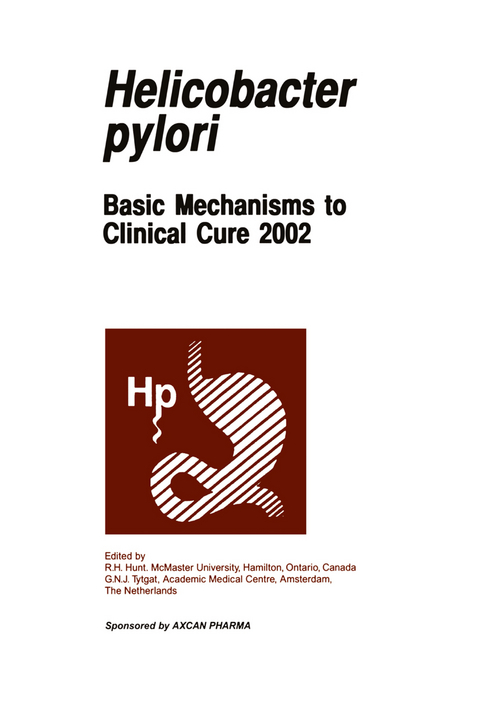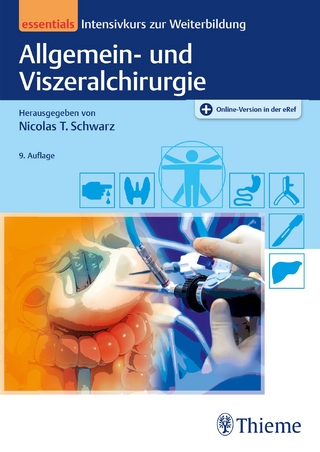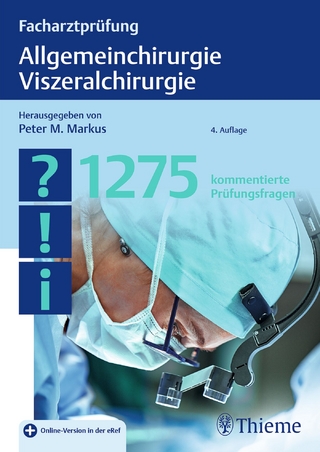
Helicobactor pylori
Springer (Verlag)
978-0-7923-8790-9 (ISBN)
These proceedings accurately reflect the state-of-the-art presentations delivered by world experts. This latest volume will further enrich this top-class series on H. pylori infection.
Section I: The New Helicobacters.- 1 What are the new helicobacters?.- 2 Helicobacter hepaticus and Helicobacter bilis: proinflammatory modulators of enterohepatic disease.- 3 Epidemiology and postulated pathogenesis of liver and biliary tract pathogenic Helicobacter species.- 4 Evidence implicating Helicobacter spp. in the pathogenesis of inflammatory bowel disease.- Section II: Strain Differences of Helicobacter pylori.- 5 The hierarchy of markers of virulence and disease causation — useful or disappointing?.- 6 SHP-2 tyrosine phosphatase and the Helicobacter pylori virulence factor CagA.- 7 What is the exact role of Lewis antigens and autoantibodies in Helicobacter pylori-related disease?.- 8 Putative role of Helicobacter antigen in functional dyspepsia: a conceptual model.- 9 Acid adaptation of Helicobacter pylori.- 10 Co-migration of Helicobacter pylori and humans: the evolving story.- Section III: Helicobacter pylori and Gastritis — The Ongoing Saga.- 11 Progress in our understanding of H. pylori infection and gastritis.- 12 The role of pepsinogen assays as surrogate markers of gastritis dynamics in population studies.- 13 Multifocal Atrophic Gastritis (MAG) does not exist: new finding based on sectioning the entire stomach.- 14 Multifocal Atrophic Gastritis (MAG) is real, and important.- 15 Are there reliable non-invasive approaches to assessing gastritis for epidemiologic studies?.- 16 Animal models of gastritis: Helicobacter pylori and high-salt diet in the gerbil.- Section IV: Helicobacter pylori and Gastric Malignancy.- 17 The evolving epidemiology of Helicobacter pylori infection and gastric cancer.- 18 Virulence of Helicobacter pylori infection and gastric cancer: lessons from mouse models.- 19 The role of bacterial overgrowth in the stomach as anadditional risk factor for gastritis.- 20 Role of ascorbate in gastric juice and the impact of Helicobacter pylori infection.- 21 Mechanisms of injury: the effects of Helicobacter pylori on cell cycle control.- 22 Role of interleukin-1 beta and other potential genetic markers as indicators of gastric cancer risk.- 23 Results of intervention trials in Helicobacter pylori-infected populations.- 24 Which lessons can be drawn from the study of Helicobacter pylori related MALT lymphoma?.- Section V: Helicobacter pylori and Clinical Issues.- 25 Helicobacter pylori eradication leads to gastro-oesophageal reflux disease.- 26 Helicobacter pylori eradication does not lead to gastro-oesophageal reflux disease.- 27 Helicobacter pylori eradication in non-ulcer dyspepsia: the case for.- 28 Helicobacter pylori eradication does not benefit non-ulcer dyspepsia.- 29 Helicobacter pylori and dyspepsia strategies — debate: Yes — A test-and-treat strategy is a viable option in primary care.- 30 A ‘test-and-treat’ strategy is obsolete in primary care.- 31 Helicobacter pylori should be eradicated in patients receiving long-term acid suppression.- 32 Helicobacter pylori eradication is not necessary before longterm proton pump inhibitor treatment.- 33 Helicobacter pylori and non-steroidal anti-inflammatory drugs: the debate is over.- Section VI: Ongoing Clinical Issues with Helicobacter pylori Infection.- 34 What are the global response rates to Helicobacter pylori eradication therapy?.- 35 What is the Helicobacter pylori global reinfection rate?.- 36 Is it time for quadruple therapy to be first line?.- 37 Eradication therapy should be different for dyspeptic patients compared with ulcer patients.- 38 Helicobacter pylori resistance to antibiotics: prevalence, mechanism, detection.What’s new?.- 39 Antibiotic sensitivities of Helicobacter pylori vary at different gastric mucosal sites.- 40 Can the response to eradication therapy in Helicobacter pylori infection be predicted?.- 41 What constitutes failure of H. pylori eradication therapy?.- 42 How can the current strategies for eradication therapy be improved?.- 43 Novel targets for Helicobacter pylori eradication.- 44 Helicobacter pylori management: how to improve the therapeutic confusion in practice.- 45 Ethical issues in the management of Helicobacter pylori infection.- 46 Are there geographic/regional differences in Helicobacter pylori eradication?.- Section VII: Global Consensus Update.- 47 Management of Helicobacter pylori infection — a review of the available regional and national guidelines.- 48 Asia Pacific guidelines for the management of Helicobacter pylori infection.- 49 What is the impact of the regional guidelines? China.- 50 H. pylori infection: Clinical management from a European perspective.- 51 What is the impact of the regional guidelines? South America.- 52 Guidelines for management of Helicobacter pylori infection in the Middle East.- 53 Global consensus update for managing Helicobacter pylori infection: critical issues from the United States.- 54 Guidelines in the management of Helicobacter pylori infection in Japan.- 55 A proposal for future Helicobacter pylori eradication guidelines.- Section VIII: Priorities for Future Research.- 56 Priorities for future research: microbiology.- 57 Priorities for further research in Helicobacter pylori management — the way forward.
| Erscheint lt. Verlag | 31.7.2003 |
|---|---|
| Zusatzinfo | XXII, 538 p. |
| Verlagsort | Dordrecht |
| Sprache | englisch |
| Maße | 155 x 235 mm |
| Themenwelt | Medizinische Fachgebiete ► Chirurgie ► Viszeralchirurgie |
| Medizinische Fachgebiete ► Innere Medizin ► Gastroenterologie | |
| Medizin / Pharmazie ► Medizinische Fachgebiete ► Onkologie | |
| Studium ► Querschnittsbereiche ► Infektiologie / Immunologie | |
| ISBN-10 | 0-7923-8790-2 / 0792387902 |
| ISBN-13 | 978-0-7923-8790-9 / 9780792387909 |
| Zustand | Neuware |
| Haben Sie eine Frage zum Produkt? |
aus dem Bereich


